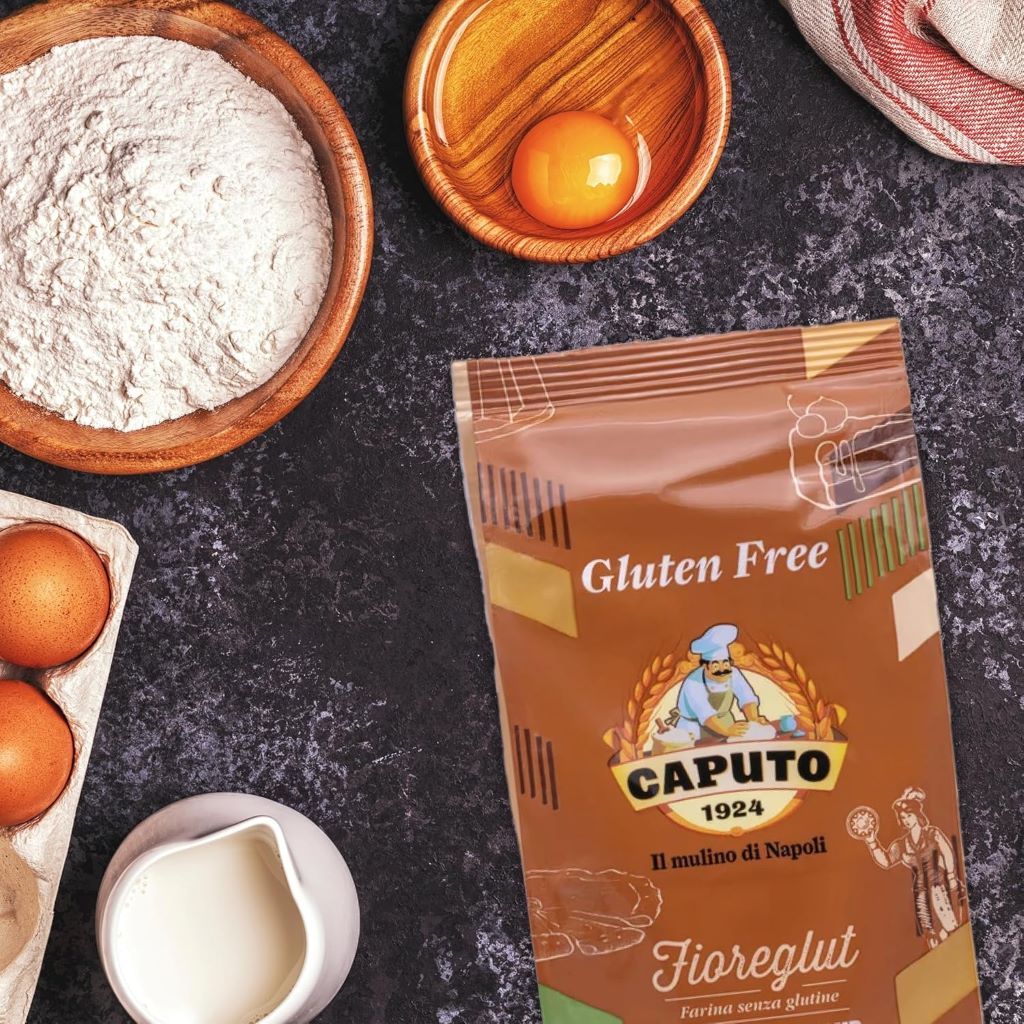Introduction: A Game-Changer for Gluten-Free Pizza Lovers
Imagine biting into a crispy, chewy pizza crust that rivals traditional versions, all without gluten. Antimo Caputo Gluten-Free Pizza Flour promises exactly that. This all-natural flour from Italy’s renowned Caputo brand has sparked excitement among home cooks and professional chefs. Its unique blend delivers authentic Neapolitan-style pizza for those with gluten sensitivities. But does it live up to the hype? This article dives deep into the flour’s performance, versatility, and real-world applications. With insights from bakers, statistics on gluten-free trends, and hands-on experience, this review uncovers whether Caputo’s gluten-free offering is worth your dough. Let’s explore what makes this flour a potential kitchen staple.
Why Gluten-Free Pizza Flour Matters
Gluten-free diets have surged in popularity, with 3.1 million Americans following them in 2023, according to Statista. Many seek alternatives due to celiac disease or gluten intolerance. However, gluten-free baking often disappoints with dense, crumbly results. Caputo’s gluten-free pizza flour aims to solve this. Crafted in Italy, it uses a blend of rice flour, potato starch, and other natural ingredients. This combination mimics gluten’s elasticity, offering a stretchy, airy crust. Unlike generic gluten-free flours, Caputo’s formula targets pizza specifically. Its rising demand reflects a 7% growth in gluten-free product sales last year. Consumers crave authentic textures, and Caputo delivers a solution tailored for pizza enthusiasts.
Key Features of Antimo Caputo Gluten-Free Pizza Flour
Caputo’s gluten-free flour stands out for its thoughtful composition. The blend includes rice flour, soy flour, potato starch, and guar gum. These ingredients create a dough that handles like traditional wheat-based versions. Importantly, it’s free from artificial additives, aligning with clean-eating trends. The flour’s fine texture ensures smooth mixing and even hydration. It’s certified gluten-free, meeting strict standards for celiac-safe kitchens. Additionally, its high starch content supports fermentation, enhancing flavor. Caputo’s heritage as a Neapolitan flour expert adds credibility. Their gluten-free option retains the brand’s focus on quality, making it versatile for pizzas, flatbreads, and more. This balance of tradition and innovation sets it apart.
Performance in the Kitchen: Real-World Testing
Testing Caputo’s flour reveals its strengths and quirks. In a home kitchen, the dough mixed easily with water, yeast, and olive oil. After kneading for five minutes, it formed a smooth, pliable ball. Unlike some gluten-free flours that crumble, this held together well. Baking at 450°F produced a golden, crispy crust with a chewy interior. The flavor was nutty and rich, thanks to slow fermentation. However, hydration levels matter. Too much water made the dough sticky, while too little yielded a dense crust. A 60-65% hydration ratio worked best. Professional pizzerias, like those reviewed on Serious Eats, praise its consistency in high-heat ovens. Home bakers echo this, noting its ease for beginners.
Versatility Beyond Pizza
Antimo Caputo Gluten-Free Pizza Flour isn’t just for pizza. Its versatility shines in various recipes. Home cooks have used it for focaccia, achieving a soft, airy texture. Others crafted flatbreads with crispy edges, perfect for dipping. The flour also works in gluten-free breadsticks or calzones, offering a chewy bite. Its neutral flavor doesn’t overpower toppings, unlike some rice-based flours. However, it’s less suited for delicate pastries, as the starch-heavy blend can feel heavy. For savory dishes, it excels, especially in high-heat baking. This adaptability makes it a pantry staple for gluten-free households. Experimenting with recipes expands its value beyond the pizza box.
Pros and Cons of Caputo’s Gluten-Free Flour
Every product has strengths and weaknesses. Here’s a balanced look at Caputo’s offering:
- Pros:
- Authentic texture mimics traditional pizza dough.
- All-natural ingredients appeal to health-conscious bakers.
- Versatile for pizza, flatbreads, and savory breads.
- Easy to work with, even for beginners.
- Certified gluten-free for celiac safety.
- Cons:
- Premium price compared to generic gluten-free flours.
- Requires precise hydration for best results.
- Less effective for non-savory baked goods.
- Limited availability in some regions.
These factors help bakers decide if the flour fits their needs. The quality justifies the cost for many, but accessibility remains a hurdle.
Real-World Experiences: What Bakers Say
Feedback from users highlights Caputo’s strengths. On Reddit’s gluten-free baking communities, home cooks rave about the crust’s crispiness. One user noted a “game-changing” Neapolitan pizza night, with guests unaware it was gluten-free. Professional chefs, like those at Eataly, use it for consistent results in wood-fired ovens. However, some bakers report challenges. A few found the dough sticky without precise measurements. Others mentioned the cost—around $10 per kilogram—as steep for frequent use. Conversely, budget-conscious bakers argue the results outweigh the price. These varied perspectives show the flour’s broad appeal, though success depends on technique and expectations.
Tips for Success with Caputo Gluten-Free Flour
Maximizing this flour’s potential requires a few tricks. First, measure ingredients by weight, not volume, for accuracy. A digital scale ensures consistent results. Second, hydrate carefully, starting with 60% water to flour ratio. Adjust slowly to avoid stickiness. Third, let the dough rest for 12-24 hours in the fridge. This boosts flavor and texture. Fourth, use parchment paper for easy handling, especially in home ovens. Finally, preheat your oven thoroughly—ideally with a pizza stone—to mimic pizzeria conditions. These steps, backed by baking blogs like King Arthur Baking, elevate your results. Precision and patience unlock the flour’s full potential.
Comparing Caputo to Other Gluten-Free Flours
How does Caputo stack up against competitors? Bob’s Red Mill Gluten-Free 1:1 Flour, a popular alternative, is more affordable but less specialized. It works for general baking but lacks Caputo’s pizza-specific elasticity. Cup4Cup, another rival, excels in pastries but can feel gummy in pizza crusts. Caputo’s blend offers better stretch and chew, ideal for Neapolitan-style pies. Data from a 2024 baking survey shows 68% of gluten-free bakers prioritize texture over cost. Caputo’s premium quality aligns with this preference. However, for budget shoppers, generic brands may suffice for casual baking. Caputo shines for those seeking authenticity.
Featured Snippet: Is Antimo Caputo Gluten-Free Pizza Flour Worth It?
Question: Is Antimo Caputo Gluten-Free Pizza Flour versatile and effective for home baking?
Answer: Yes, Antimo Caputo Gluten-Free Pizza Flour excels in creating authentic, chewy pizza crusts. It’s all-natural blend of rice flour, potato starch, and guar gum mimics traditional dough’s texture. It’s versatile for flatbreads and focaccia, though less ideal for pastries. Home bakers praise its crispiness, but precise hydration (60-65%) is key. While pricier at $10 per kilogram, its quality justifies the cost for pizza lovers. Certified gluten-free, it’s safe for celiac diets. For best results, use a pizza stone and long fermentation.
Relevant FAQs
- Is Caputo Gluten-Free Flour safe for celiac disease? Yes, it’s certified gluten-free, meeting strict safety standards.
- Can I use it in a regular oven? Absolutely, but a pizza stone and high heat (450°F) enhance results.
- How does it compare to wheat flour? It closely mimics wheat’s texture but requires careful hydration.
- Where can I buy it? Check Amazon or specialty stores like Eataly for availability.
Final Thought: Should You Try Caputo’s Gluten-Free Flour?
Antimo Caputo Gluten-Free Pizza Flour delivers on its promise of versatile, all-natural baking. Its ability to create authentic pizza crusts sets it apart in the gluten-free world. While the price and availability may deter some, the results—crispy, chewy, and flavorful—make it a worthy investment for pizza enthusiasts. Whether you’re a celiac or simply exploring gluten-free options, this flour offers a taste of Italy. For more insights, check Serious Eats’ gluten-free baking guide or King Arthur Baking’s tips. Read More: How Much Flour for Philips Pasta Maker: Perfect Portions
Call to Action
Ready to elevate your gluten-free pizza game? Grab Antimo Caputo Gluten-Free Pizza Flour and experiment with your next pie. Share your creations in the comments or tag us on social media. What’s your favorite pizza topping to pair with this flour? Let’s inspire each other!









Leave a Reply